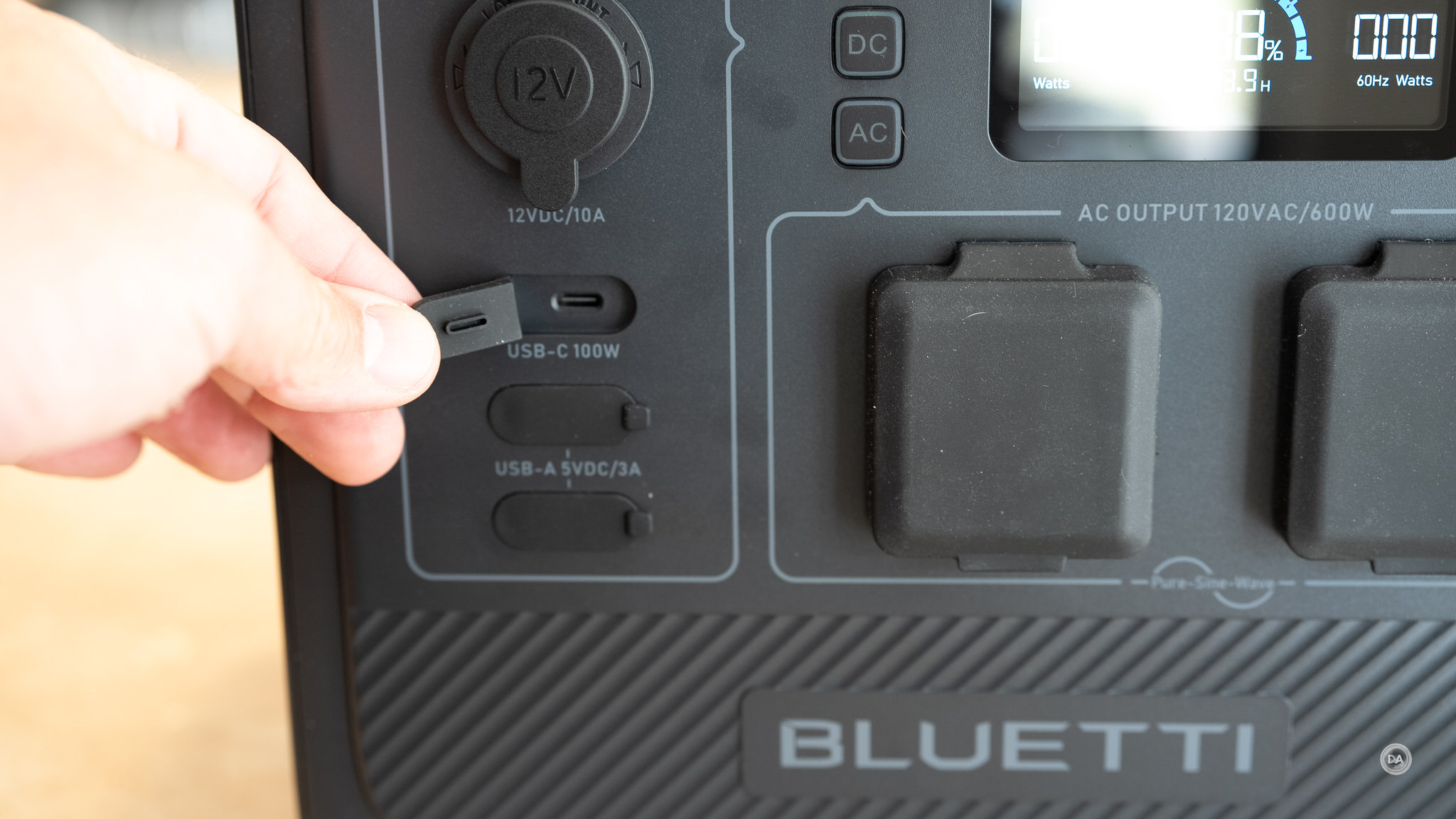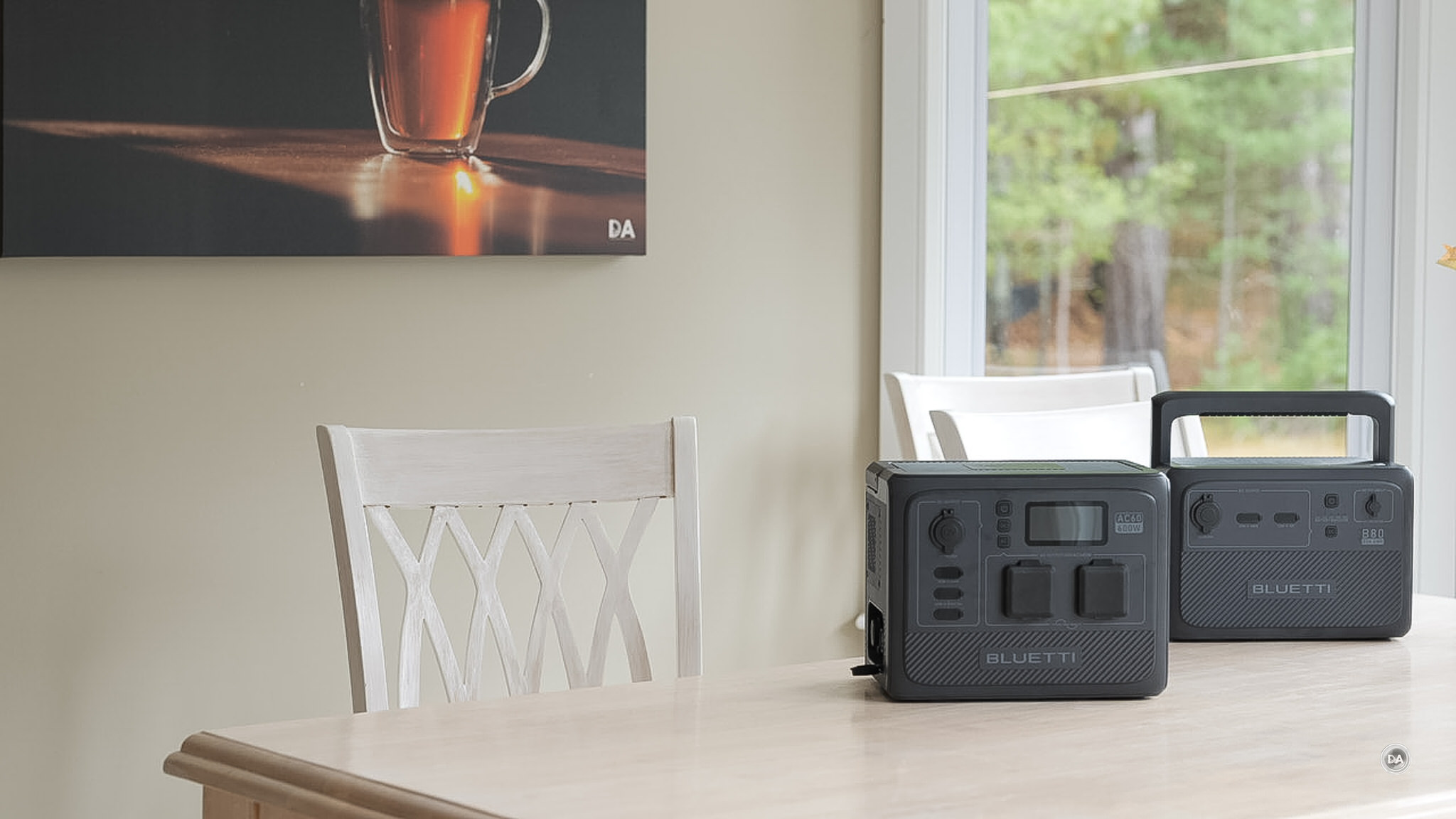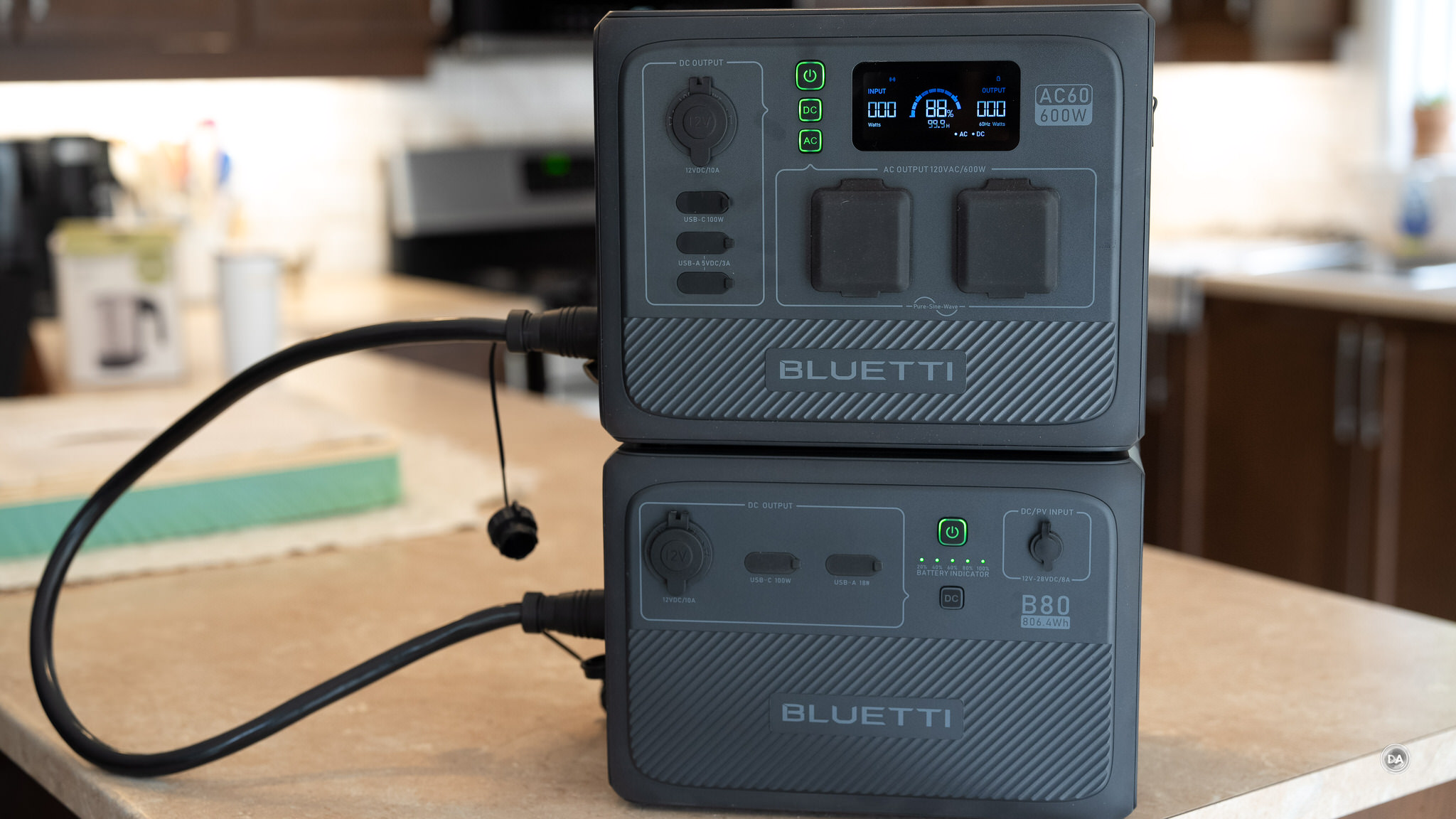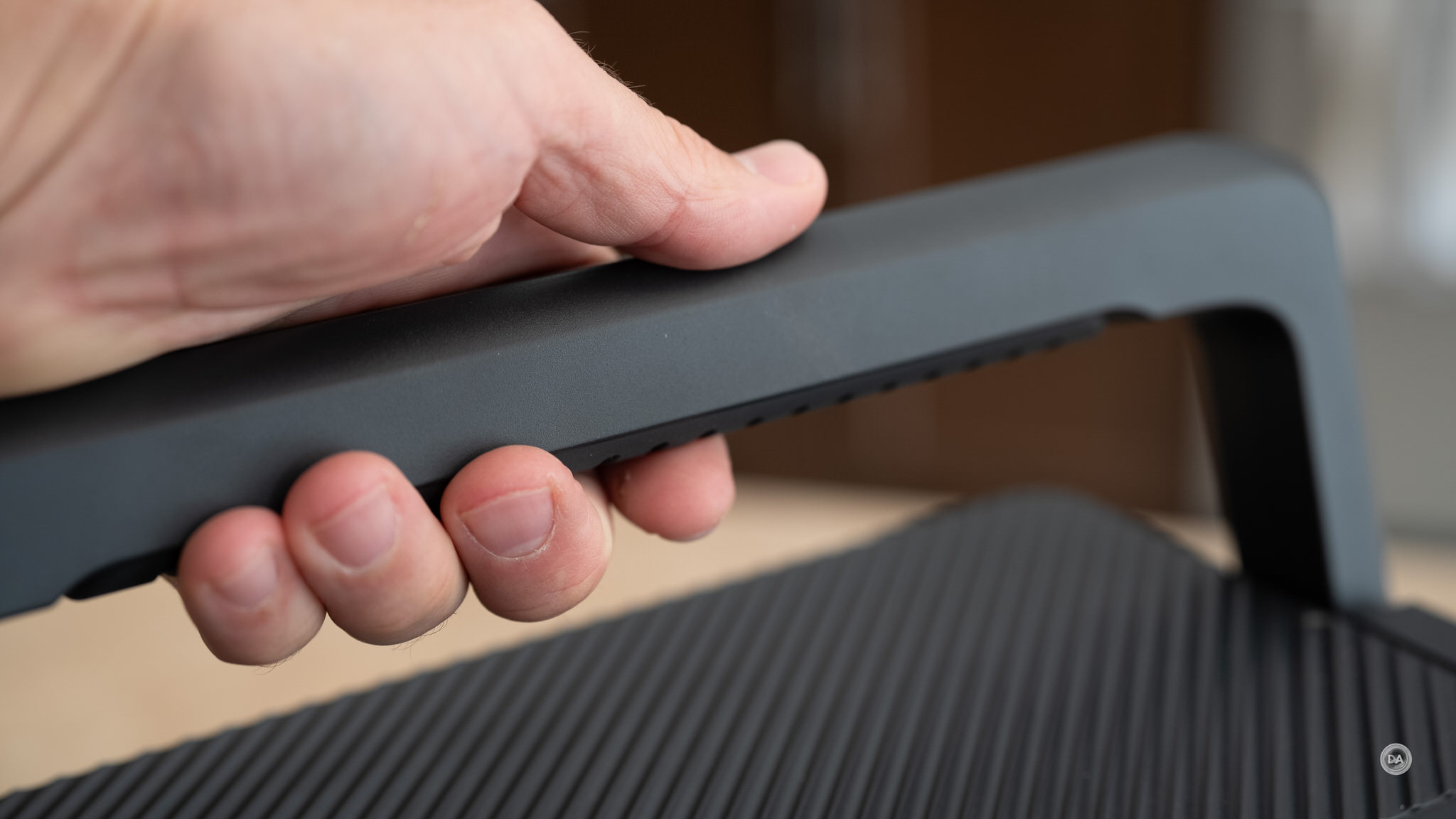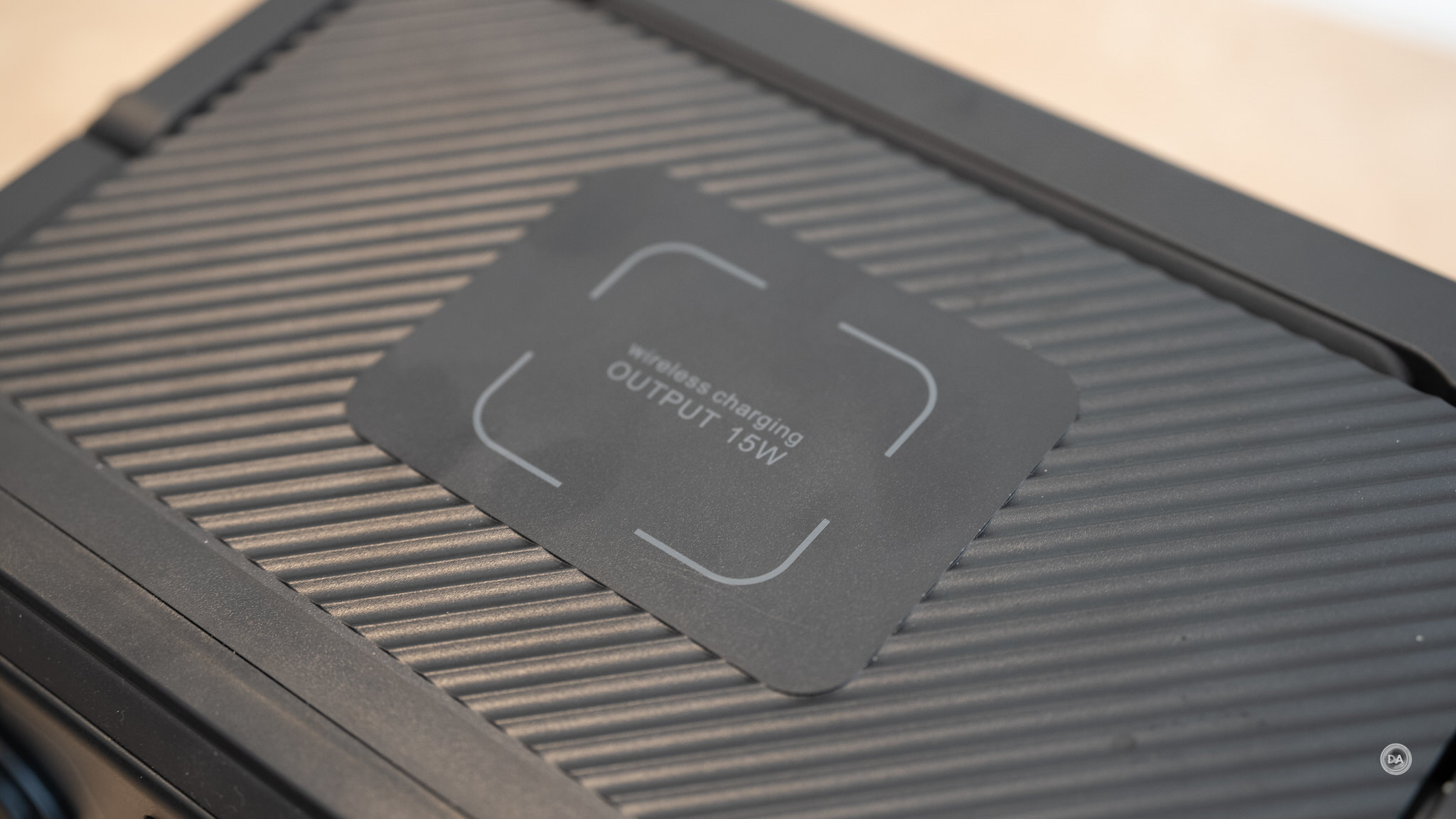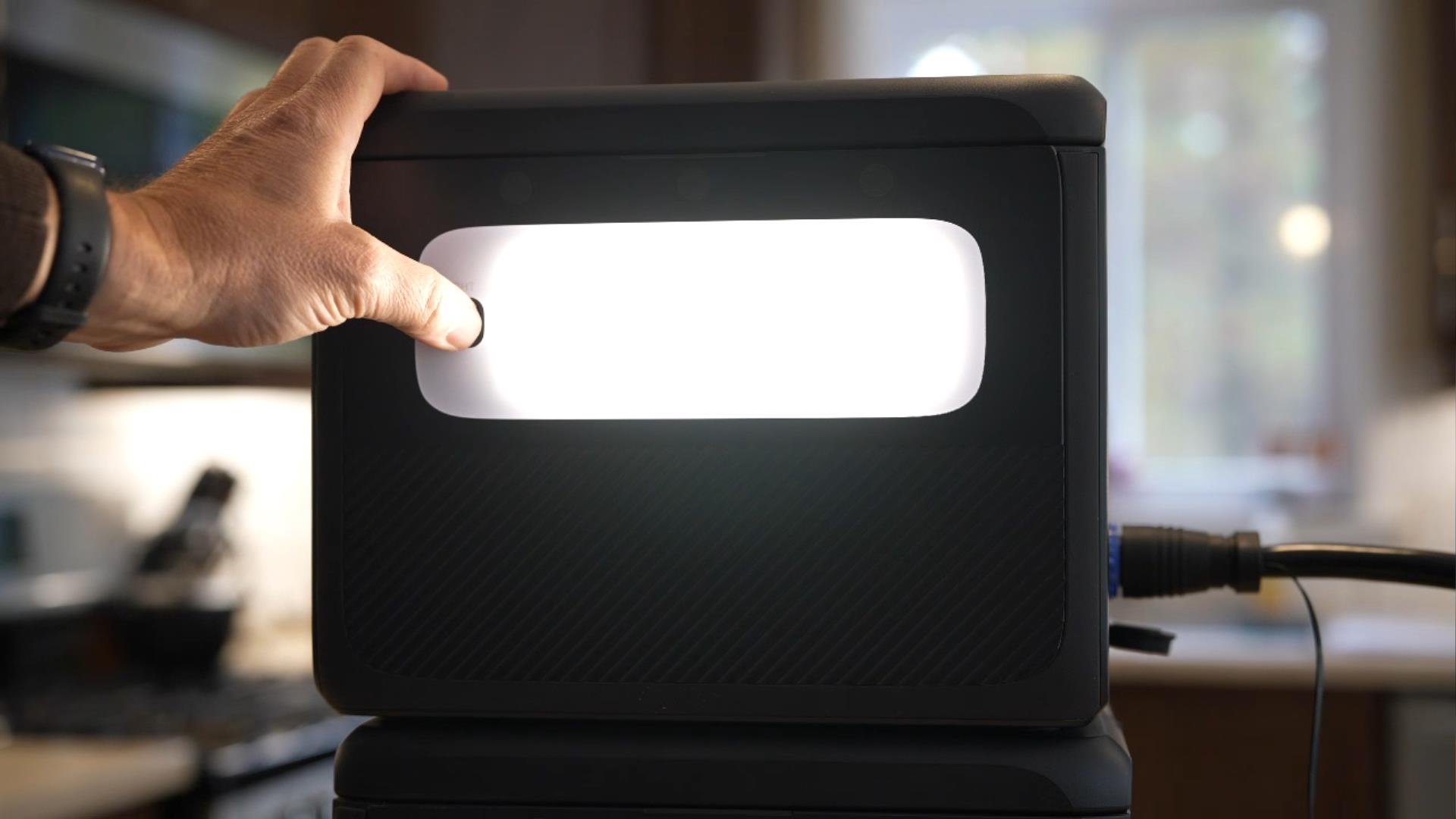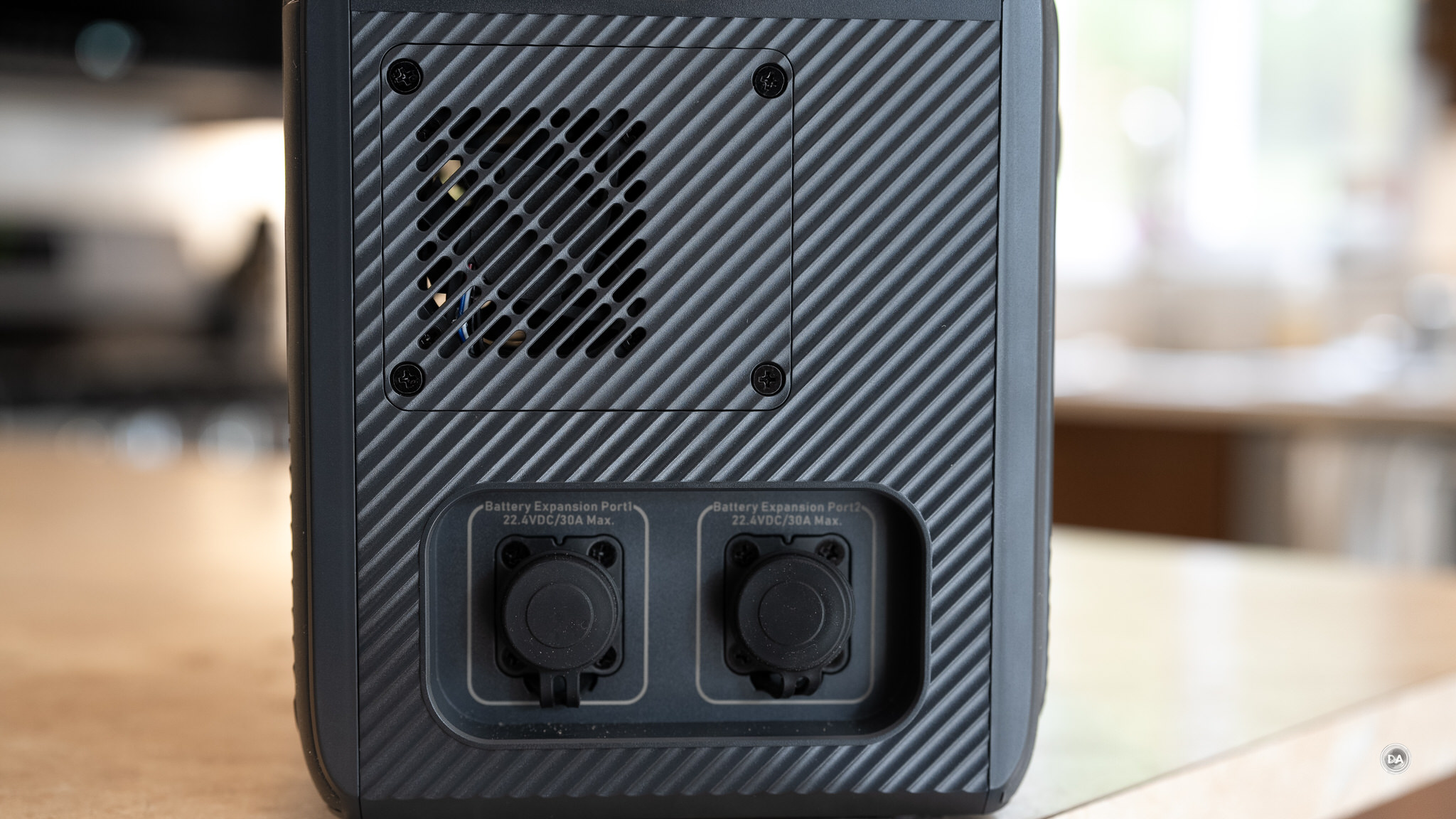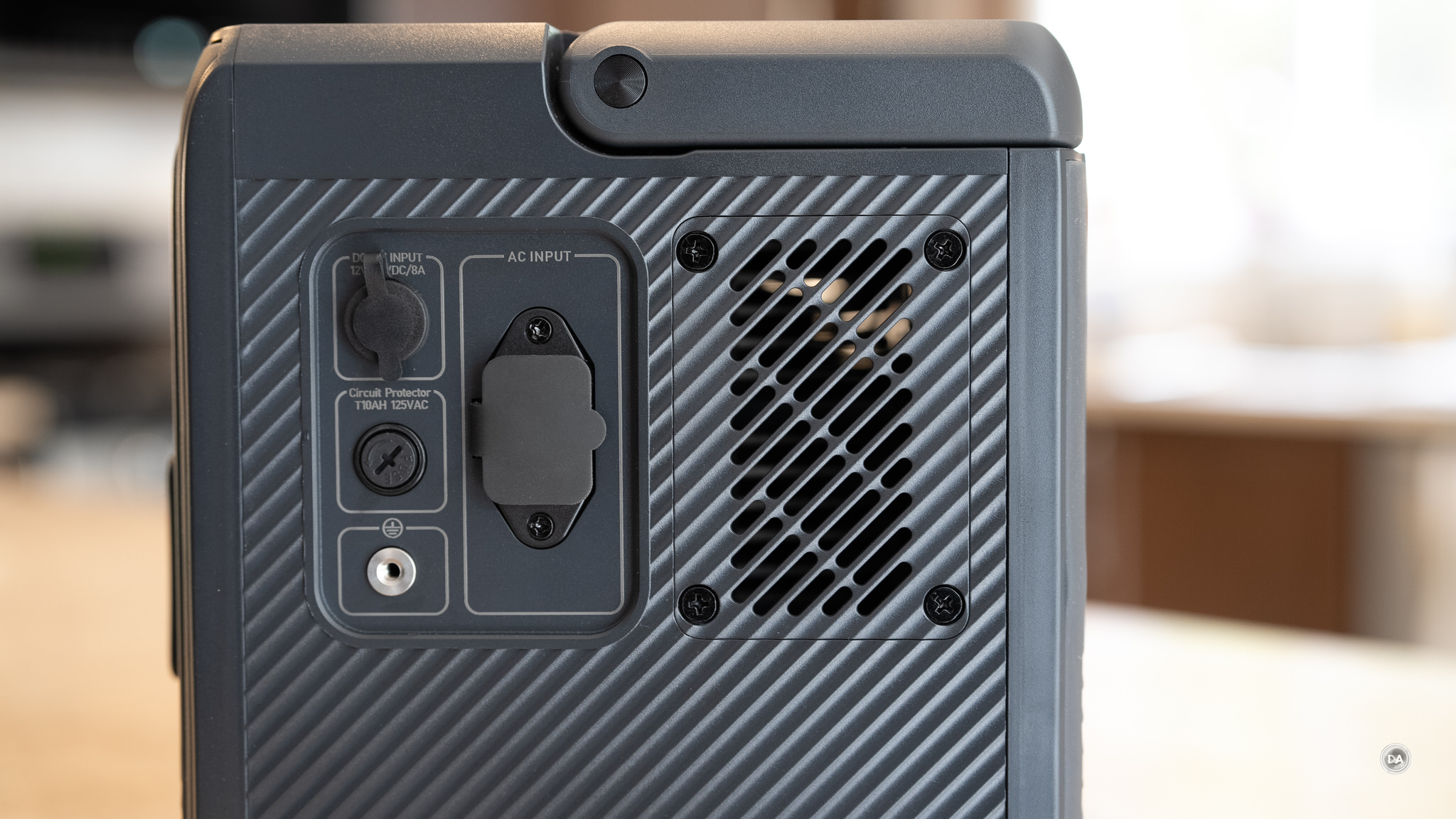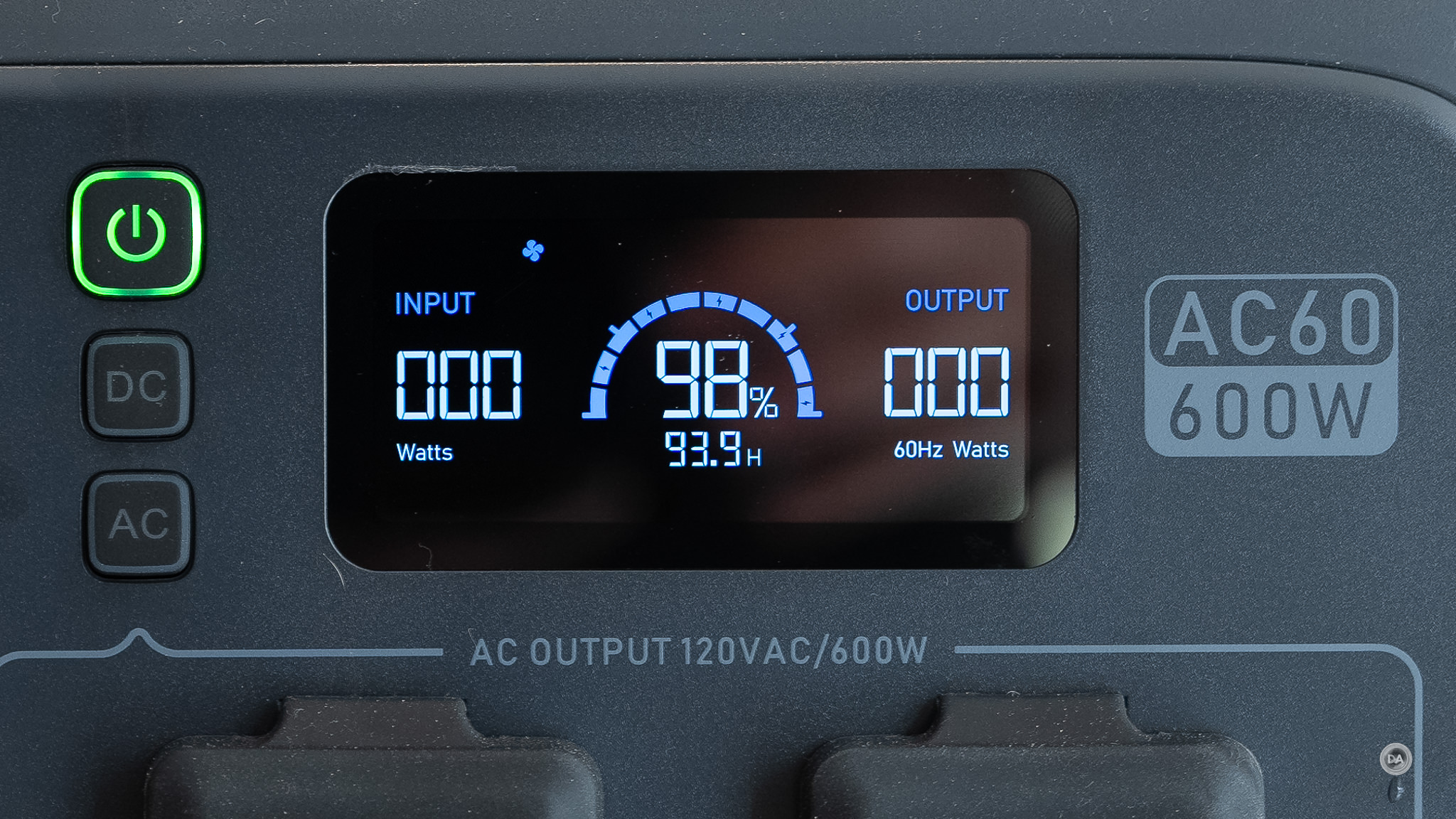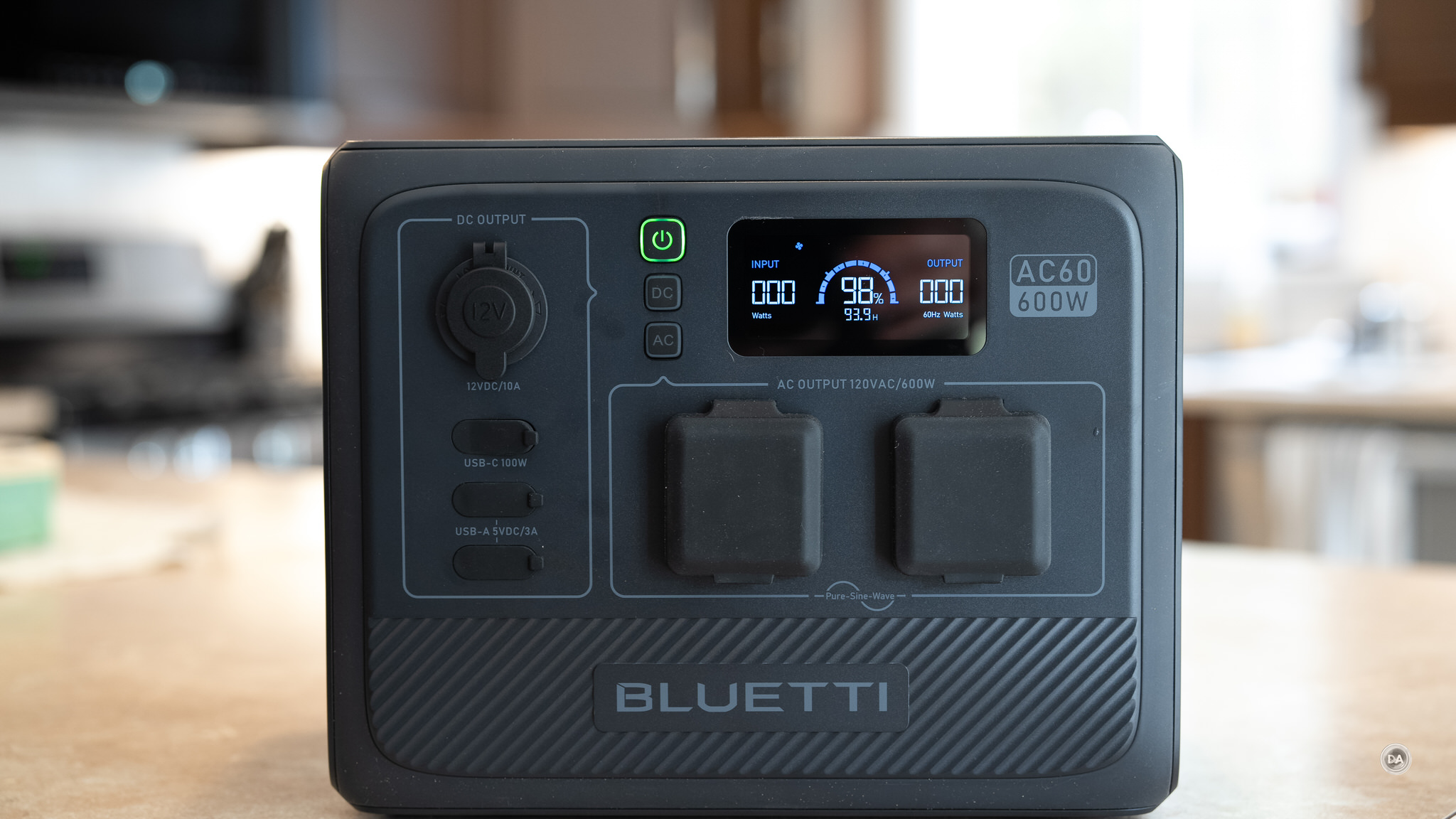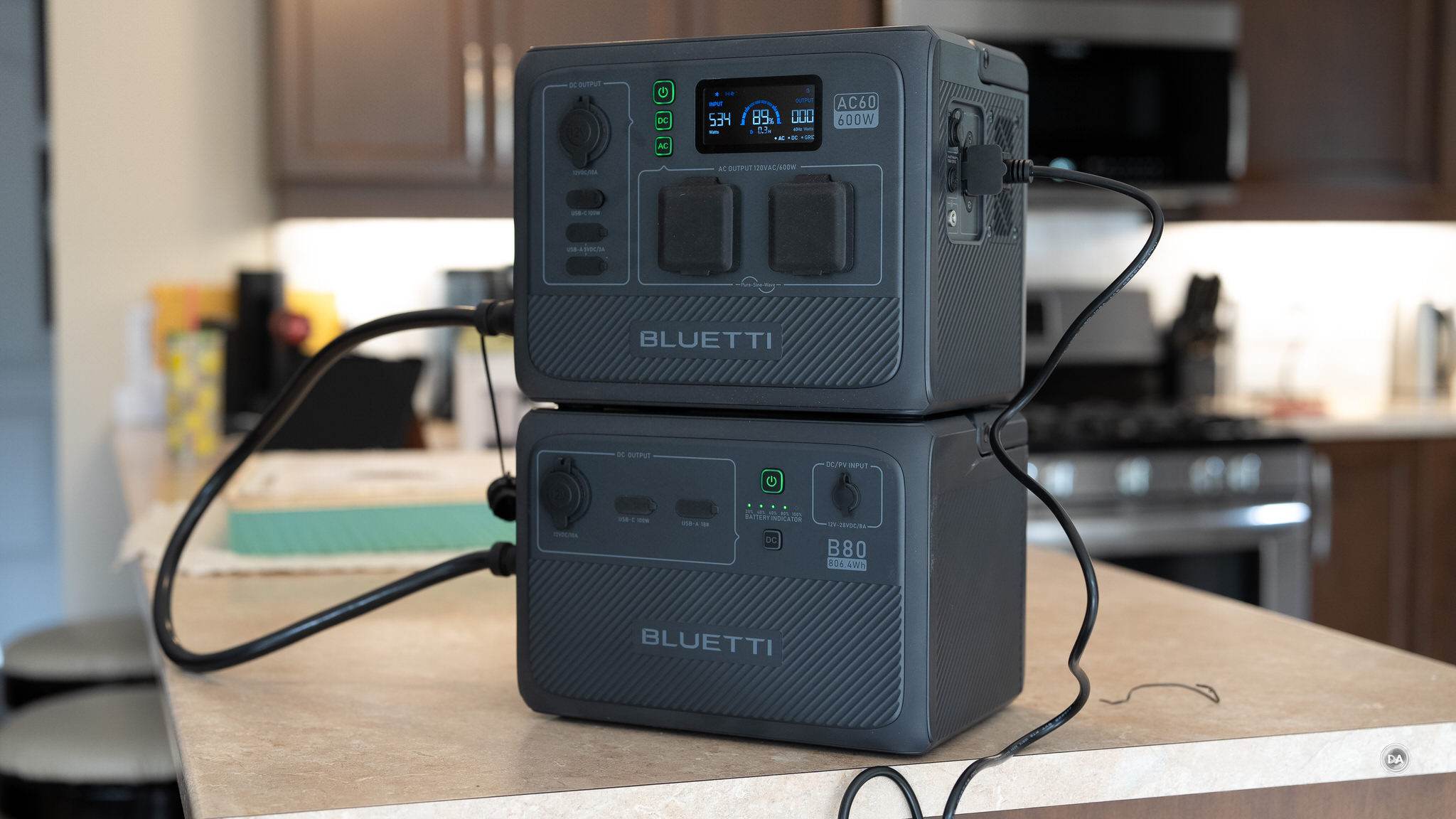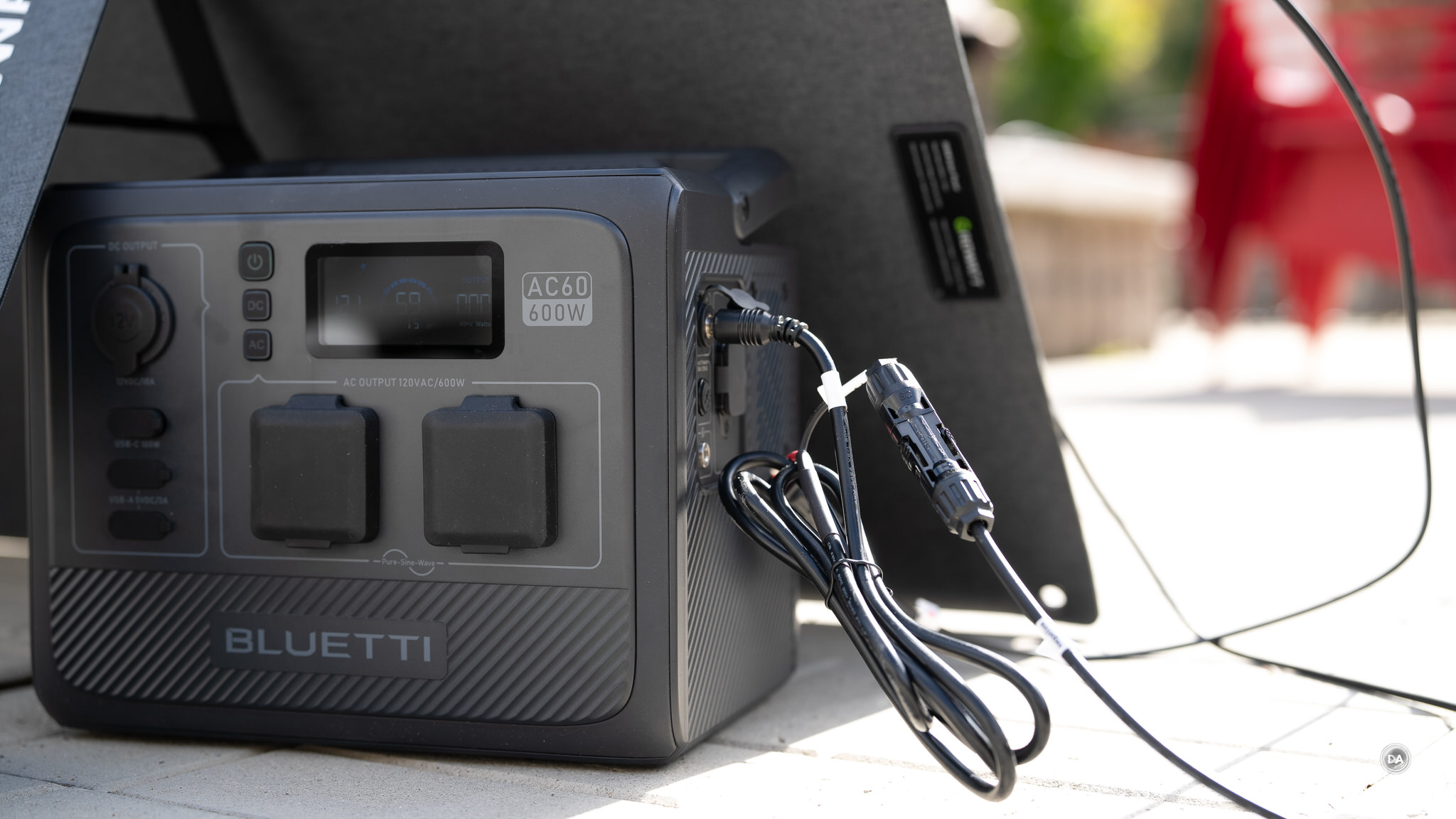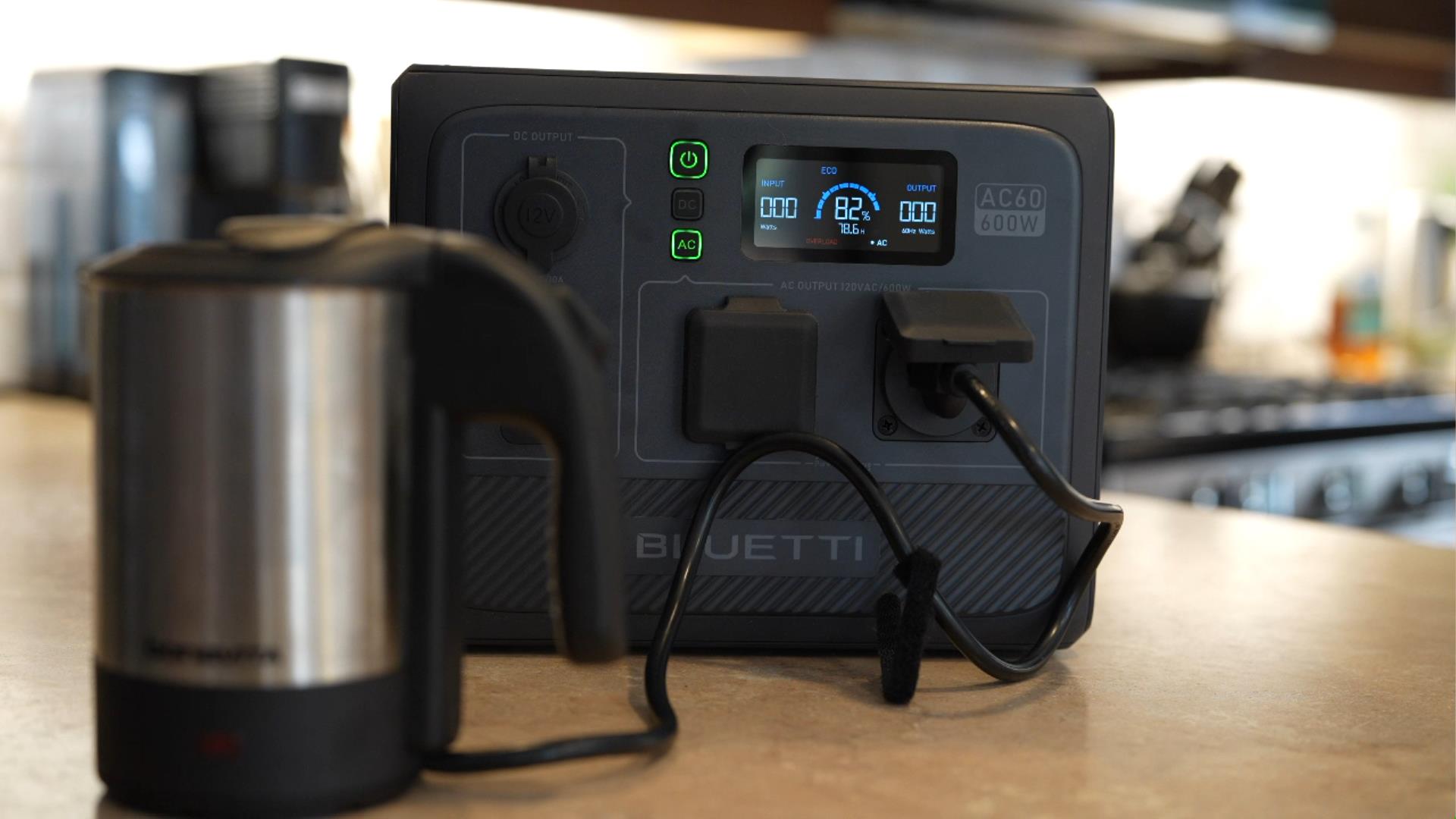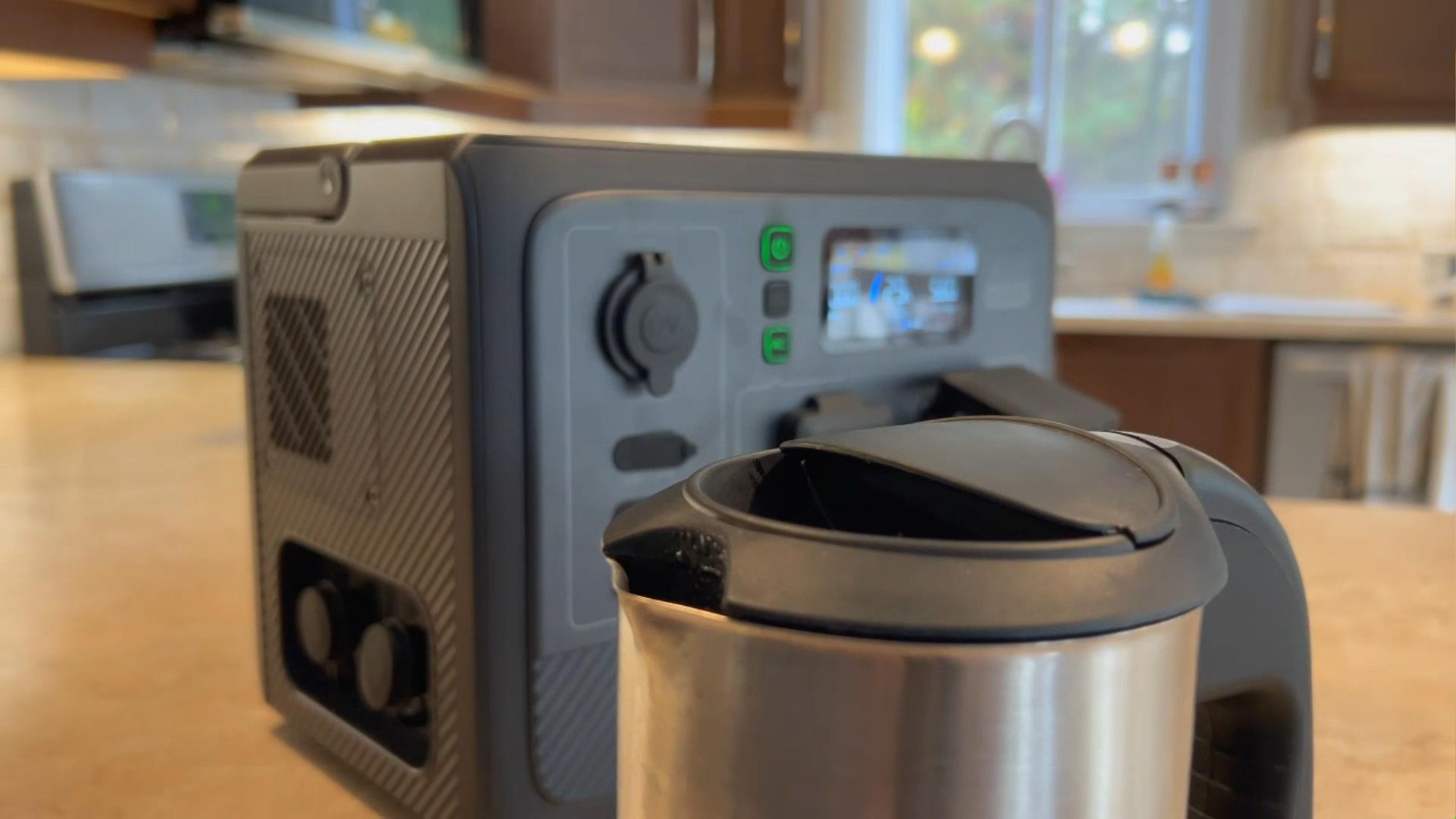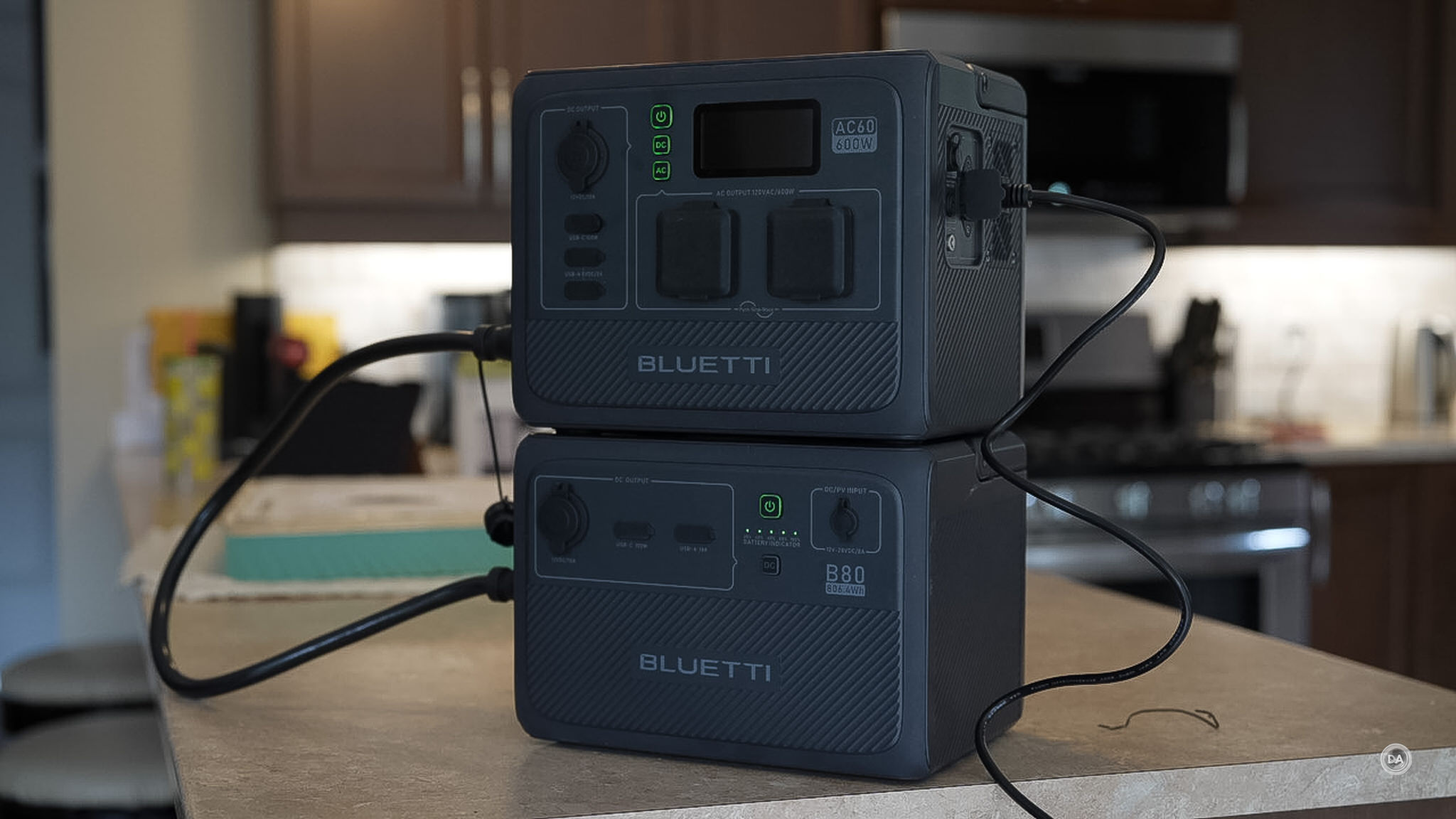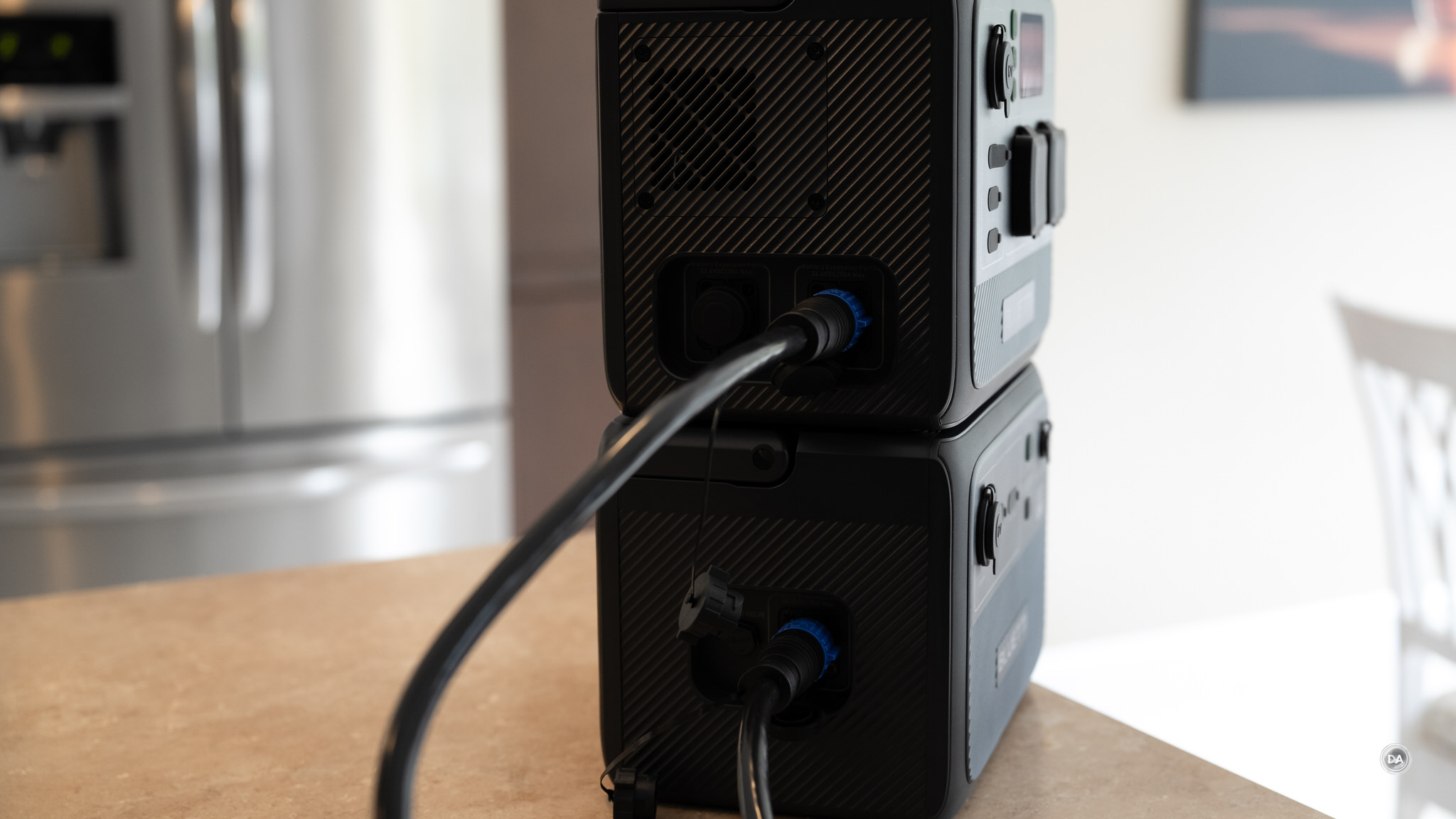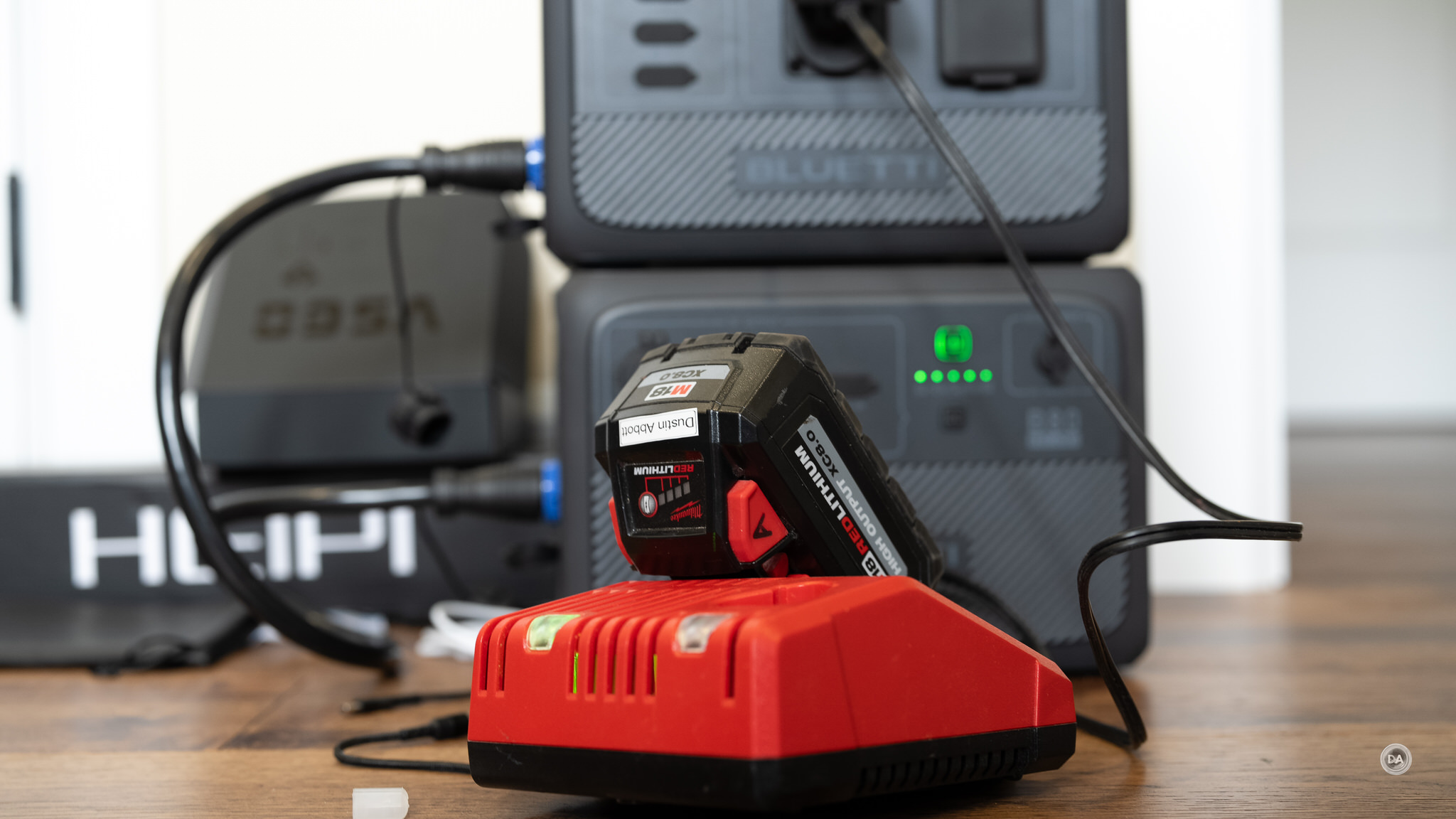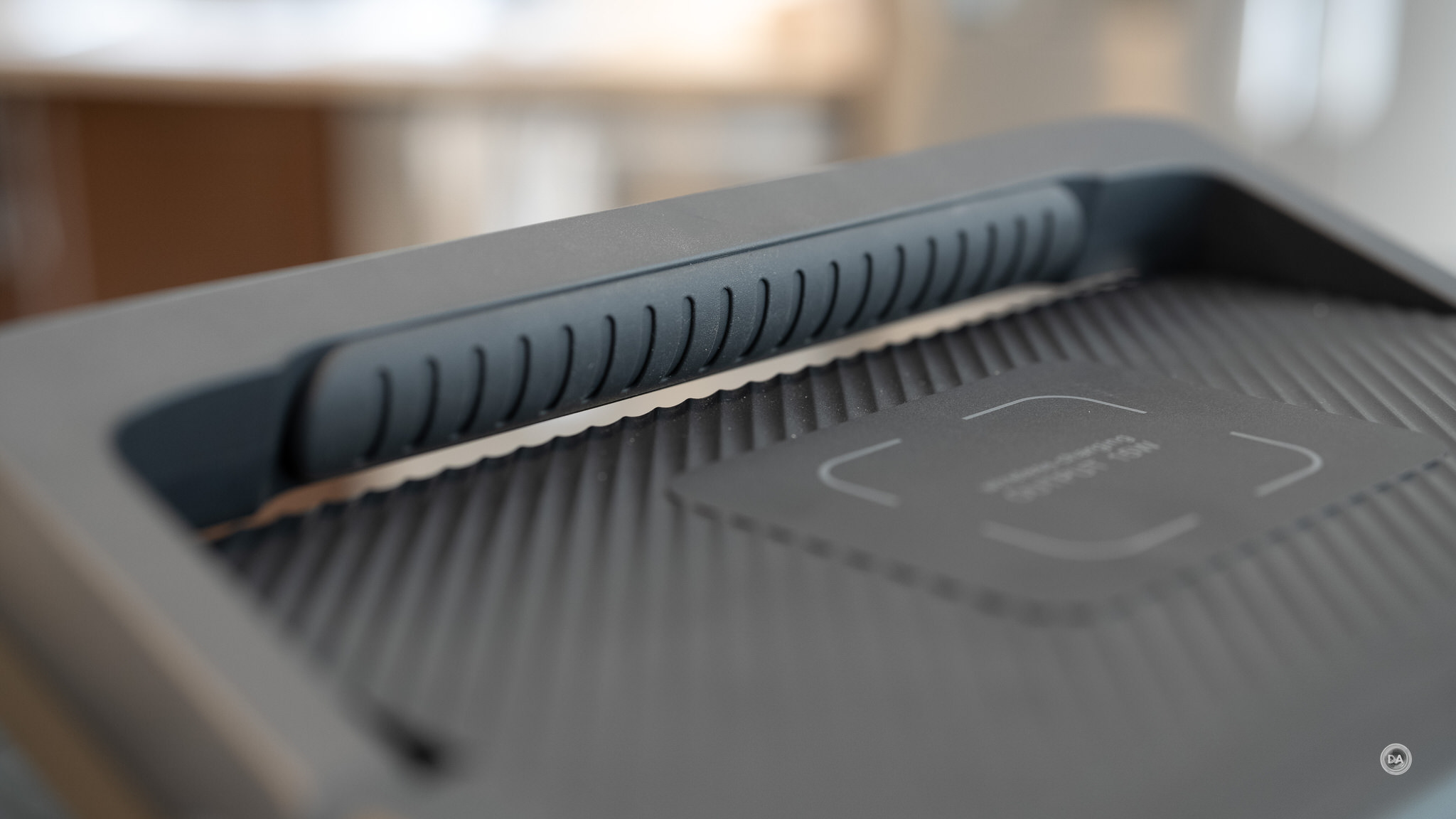I’ve had the opportunity to review around 10 different portable power systems at this point from at least six different companies. Familiarity with what so many different companies are offering allows me to see the commonality of design across these companies along with the areas where they set themselves apart. I’ve reviewed other Bluetti products in the past, and so in many ways reviewing the new Bluetti AC60 feels like reviewing a second generation of their products. There are a lot of more subtle upgrades to previous Bluetti products I’ve reviewed, but the biggest unique trend that I’ve seen with Bluetti’s newest designs is their embrace of a more modular design. Many of their newer power stations are compatible with a lineup of expansion batteries like the B80, each of which adds 806Wh of storage. If you are more visually oriented, you can see all of my findings on the AC60 and B80 in my video review below…or just keep reading.
Let’s start with the AC60 alone. Here are some of the key features of the Bluetti AC60:
- 6-year Warranty
- IP65-rated Dustproof & Water-resistant
- Expandable Capacity From 403Wh to 2,015Wh
- Turbo Charging to 100% in 1 Hour
- LiFePO4 Battery with 3,000+ Life Cycles to 80%
- 4 Ways to Recharge (AC/Solar/Car/Lead-acid battery)
- Easy & Remote Control via BLUETTI App
The heart of the AC60 is a 403Wh LiFePO4 (lithium iron phosphate) battery that is rated for 3000+ recharge cycles (to 80%, which is the industry standard). The earliest power stations I reviewed had batteries that were only rated for 500 recharge cycles, so this is clearly a huge improvement of battery technology. To put that in perspective, you could do a recharge cycle every day, 365 days a year, for over 8 years and still only be at 80% of battery capacity.
Physical Design
One of the key upgrades I quickly noticed is that the AC60 is much more ready for facing the outdoors than many of the units I’ve tested. It’s always been a bit strange to me when portable power stations being advertised for camping don’t have an IP rating. That’s not a problem here, as the AC60 carries an IP65 rating. IP stands for Ingress Protection, and a rating of IP65 tells us two things. The first number (6) is from a scale of 0-6 that measures protection against the intrusion of solid particles like dust. This would be considered “dust tight”, or fully sealed against dust.
The second number (5) is from a scale of 0-9 that shows how protected an electrical device is from the intrusion of liquids. A rating of 5 means a devices is protected against jets of water from all directions. So, while it isn’t designed to be submerged in water, it is fully protected against the normal kinds of water you encounter while camping – heavy rain. You can see it, too, in the form of the covers over every port as well as a tougher finish on all the outer materials. This unit just feels “tough”.
It is largely based on the quality of the weather sealing that Bluetti is offering an industry leading 6 year warranty. That’s impressive for anything built around a battery!
The AC60 is a moderately sized charging station. The front façade isn’t particularly small for a lower output unit like this, but the AC60 is thinner than many other units I’ve tested. In some ways I think Bluetti’s current designs are streamlined with some standardized dimensions to allow them to be stacked with the expansion batteries like the B80. They have a similar width and depth to allow for a clean stacking.
The AC60 is 290mm (L) × 205mm (W) × 234mm (H), or 11.42in × 8.07in × 9.21in and weighs 9.1kg (20.06lbs), meaning that it really isn’t much different in size from the larger capacity EB70S, though that unit did have a separate power brick.
The AC60 has a very nice carrying handle that folds flush with the top to allow for a clean profile. I appreciated the fine touches on the handle like a rubberized, soft touch grip surface on the underside that has a little cushioning to make for a nice carrying experience.
In addition to the handle there is a wireless charging pad with a 15W output. I found that I had no problems with my phone quickly starting to charge even with my Peak Design mobile case on the iPhone 14.
On the back there is a different kind of light for one of these units in the form of a LED panel. It has two brightness levels plus a flashing “emergency” pattern as well.
The are vents on either side of the AC60 for air to be pulled through to cool the unit, The left side has the connection ports for attaching expansion batteries like the B80.
The right side has two different types of inputs, including the port for the AC input cord and a DC input (DC7909 style) for charging inputs from solar, “cigarette lighter” type car input, or even from a lead acid battery. There’s even a grounding connector if you want to ensure that something freak like a lightning strike doesn’t fry your gear.
The front façade is well laid out. There are a total of 6 outputs, including two grounded 120V/5A AC plugs that are collectively rated for up to 600W power output (more on that in a moment). The inverter provides pure sine-wave power. There are also two 5V/3A USB-A ports along with one 100W USB-C port with a built-in eMark chip (this allows for detection of the power and data transmission capabilities of the attached cable/device.) It’s interesting that we still have more USB-A than USB-C ports even though it seems like USB-C has become ubiquitous. The final port is a 12V/10A car outlet.
The LCD screen is bright and clean, with easy to read graphics. There are three weather sealed buttons to the left of the screen, including the main power button along with buttons to power the DC and AC outputs (you’ll need to turn on the DC output to power the wireless charging pad on top). Each button lights up green when powered on. It’s a more logical setup than many power stations where buttons are often distributed over multiple locations and can be somewhat ambiguous as to whether they are on or off. The LCD will power down to save energy after a few minutes, and if you turn on the main power without turning on the AC or DC outputs, the unit will also power down into standby mode after a few minutes. All outputs have have rubber seals over them to help with moisture and dust intrusion.
Tests and Performance
Another key area of improvement is in the power flow-through. The EB70S had an external power brick, and in many ways that external brick was the limiting principle. The adapter itself was limited to 200W of input power, so that in turn meant that the unit itself was designed around a maximum input of 200W regardless of the charging source. Solar panels? Maximum 200W. DC input? 200W. AC adapter? 200W. That meant that it could take more than 4 hours to recharge the EB70S even at the quickest rates.
There is no external brick this time around, but instead everything has been internalized. Power input has tripled and so that it matches the output of the unit at 600W. Solar is still limited to 200W of input (unfortunately), but the AC input has a turbo mode that can run as fast as 600W of power input, allowing the unit to be charged in as little as one hour. The Bluetti app allows you to choose from three different charging modes – Standard, Silent, and Turbo. Silent will obviously be the slowest (but quietest) while Turbo will be the fastest, though at the costs of the fans going full tilt to keep the batteries cool during the charging process.
Charging via solar will obviously be slower, and, as always, will be heavily impacted by the environmental conditions (quantity and angle of sunlight, external temperature, etc…) Bluetti states that the AC60 can be fully charged in as little 2.5 hours, though expect a little longer if you are in less optimal conditions. DC charging will depend on the output of the charging source, but if you can get a 200W output, charging time will be 2.5 hours.
There are many reasons why having internalized charging circuitry is superior (not the least because it makes the unit more self-contained and portable). The charging brick is typically the weak link in the power flow-through as companies don’t want to make them huge, but too much power flowing through them without proper cooling leads to all kinds of problems. This internalized design allows for the power input to make the power output, which allows for UPS (Uninterrupted Power Supply) functionality. Bluetti claims that the AC60 will switch over from AC to battery power in case of emergency in 20ms or less, fast enough for sensitive equipment (like your computer) to be protected. I use a similar unit on my home workstation at all times to make sure that my equipment (and my work) is protected during power outages or brownouts.
The AC60 has a rated output of 600w (Pure Sine-Wave power), though it will provide up to 1200W of surge power for devices that draw more current as they start up. I’ve found that this really helps expand the kinds of devices that can be powered from it. I found when attaching my 1100W blender that it would run it for about 10 seconds even though initial draw went as high as 1169W. It was the fact that the draw continued in the 950W range after that initial surge that the unit initiated a shutdown. Both the LCD and the App record a “Overload” and the app explains to unplug everything from the AC outlets and then hold down the AC button to clear the codes.
I tried running my 900W mini electric kettle. I ran into the same issue, as the draw hovered in the 850W range. The AC60 shut down after roughly 10 seconds and flashed the Overload message. But the AC60 also has another trick up its sleeves. In the Bluetti App you can select the “Power Lift” option. This allows you to run some higher draw heating devices (those with resistive loads – no air conditioning units or washing machines, for example) without tripping the device. I ran my kettle again with Power Lift enabled, and sure enough, the power registered consistently in the 580-590W range. It took longer to bring the kettle to boil at a lower power level (about 4 minutes), but it did successfully bring it to boil, though at the cost of nearly 60% of battery output (I started at 86% charge and ended with a 27% charge after boiling the water).
This shows both a weakness along with a strength. It’s great that this unit can expand its usefulness in terms of being able to power some additional devices or appliances, but it also is stuck in “no man’s land” at that 600W rating. I’ve got a few 300W power stations, and they are fine for cameras, phones, tablets, and even running portable lighting. A 600W unit doesn’t actually add a lot of additional devices that can be powered, and its native battery capacity (403Wh) isn’t enough to run higher draw devices for very long.
B80 Expansion Batteries
The second problem is solvable via the B80 expansion batteries. I’ll link to a second article focused on the B80s once I have that completed, but the B80 units are capable of being used as scaled down standalone power stations (though without an AC inverter of any kind), but their primary purpose is to expand the battery capacity of other power stations like the AC60. The B80 units have 806Wh of storage (double the AC60), and you can connect two of them to the AC60, bringing the total battery capacity up to 1209Wh with on B80 or 2015Wh with 2.
That obviously can radically change the math of how long you can power things, and could be particularly useful for being able to store more energy to be used in a time of need. There is one heavy duty battery expansion cable included with each B80 unit that allows you to easily connect it to the AC60 (or certain other power stations with a separate adapter cable). Once connected, the units operate as one “smart” unit, and the AC60’s LCD will show the total capacity and battery life percentage. After my powering of the tea kettle, I attached the B80 and the charge indicator went from 27% to 65%. The two (or three) units will charge as one as well, so if I connected a solar panel to charge the AC60, it would also charge the B80.
Of course, charging the B80 separately via its own solar panel is one way to work around the 200W solar input limitation of the AC60. The B80 is also rated for 200W input, so if you charge the two separately you can obviously charge them quicker than using a single 200W panel and passing power through to the B80.
The B80 is designed to the same visual and weather sealing standards, so they look natural paired together. I do wish the connecting cord was a little less stiff, as it will definitely stand out to the side if the units are stacked on top of each other.
While adding the B80 dramatically changes the storage capacity of the AC60, it doesn’t increase the output of the inverter. I would have liked a larger inverter on the AC60 even if higher draw devices would drain the native battery quicker for the simple reason that this battery capacity is designed to be potentially augmented by the B80 units. The EB70S had an 800W output but with a 716Wh rating for storage; a single B80 has more storage capacity than that, meaning that the combination of one B80 along with the AC60 gives you nearly 1.7x the storage capacity. I would call the power output of the inverter the single biggest drawback of the AC60.
Applications and Conclusion
One common application for these power stations is for people to run their CPAP machines while camping, and this will be no problem for the AC60. There’s enough power to run a CPAP for multiple nights, and the ability to charge reasonably fast from solar should allow you to enjoy a longer camping trip if desired.
There is plenty of power here to recharge phones, tablets, or cameras many times over. Charging the battery of one of my cameras only takes off a few percentage points from the battery with the native AC60, but if the B80 is attached it hardly moves the needle.
I use power stations almost exclusively to recharge the batteries for my many power tools (which have now expanded to include a lawn mower, blower, trimmer, and even chain saw). I try to use solar as much as possible to recharge my power stations, as this is not only better for the environment but gives me the (admittedly false) feeling that I’m running them for “free” (other than the huge investment in tools, batteries, solar panels, and power stations, of course)!
Bluetti has always been competitive with their pricing, and that remains the case here. The AC60 retails for $599 US, or $699 CDN. You can pair it with a 200W solar panel for right under $1000 USD, or with the B80 for about $1100 USD. That is going to seriously undercut some of the primary competitors, and the build quality, connectivity, and flexibility of the newest Bluetti products is truly top notch.
I’ve been able to watch Bluetti grow as a company over the past two years, and their most recent products are perhaps the nicest made that I’ve seen. They’ve learned a lot of the lessons from earlier mistakes, and most of the things that I have been criticized in the past have been addressed here. I wish the AC60 had a larger inverter and I would have chosen to have 2 USB-C ports and a single USB-A port than the other way around, but really, outside of that, I have very little to criticize. This is a rugged, flexible device, and I think the modular design is very clever. Portable power stations like this seem like a cheat code when camping or overlanding and make “roughing it”, well, a whole lot less rough!
_______________________________________________________________________________________________________________
Purchase the Bluetti AC60 @ Bluetti Store (use Code DustinAC60 for an additional 3% discount) | Amazon | Amazon Canada | Amazon UK | Amazon Germany
Purchase the B80 Expansion Battery from Bluetti Store (use Code DustinAC60 for an additional 3% discount) | Amazon | Amazon Canada | Amazon UK | Amazon Germany
Purchase the Bluetti PV200 @ Bluetti Store (use Code DustinEB70S for a discount) | Amazon | Amazon Canada | Amazon UK | Amazon Germany
Keywords: Bluetti, Bluetti Review, Bluetti AC60, AC60, B80, Bluetti B80, Review, PV200, 600W, 1209Wh, Jackery Explorer, Demonstration, Test, Photography, Solar Power, Portable, Camping, Hiking, Video Lights, Back up Power


